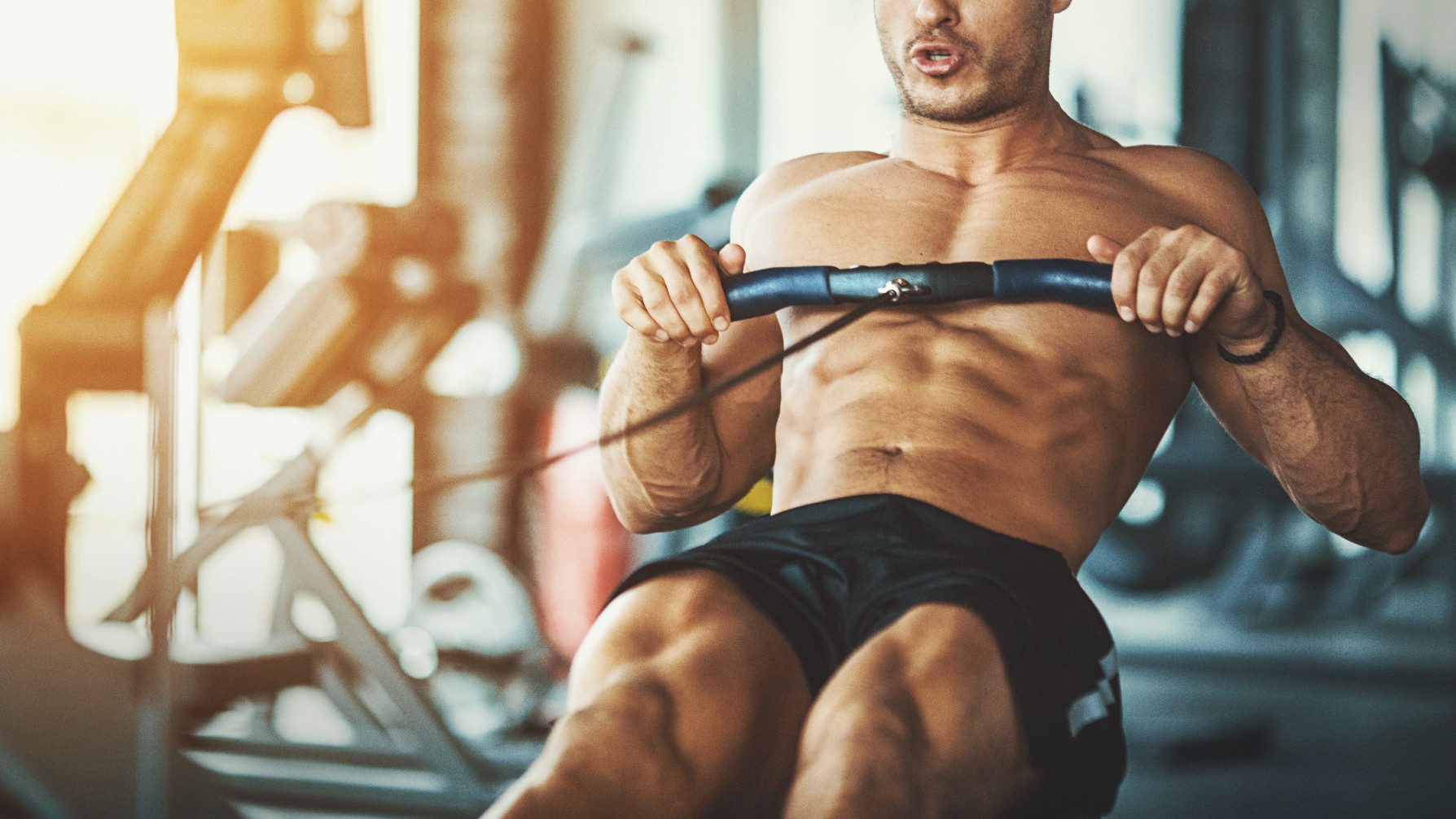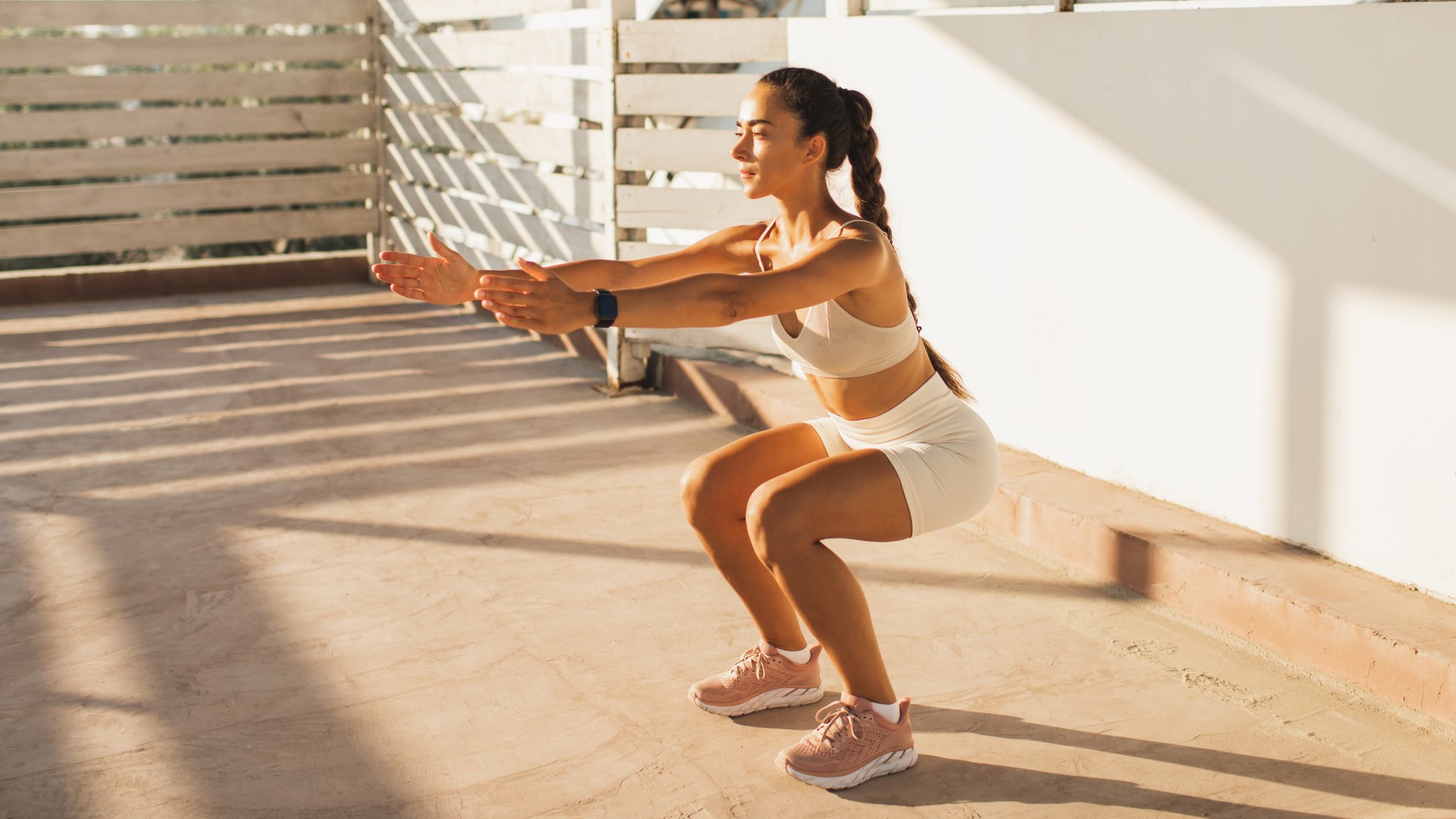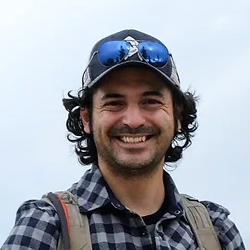5 exercises to do if you’re 'skinny-fat'

One’s weight has long served as an indicator of one’s health. The common wisdom dictates that if you’re thin, you’re healthy. If you’re overweight, you’re not healthy. As it turns out, there’s a lot more nuance to one’s health than the number on the scale.
If you’re skinny-fat, for example, you may not be as healthy as you could be, despite a healthy overall weight. That’s because you might not be maintaining a healthy muscle mass. Low muscle mass can be detrimental to metabolic health and long-term bone health.
“Skinny-fat is a term that’s been around for a long time,” says Selene Yeager, National Academy of Sports Medicine (NASM) certified sports trainer, and host of the “Hit Play, Not Pause” podcast. Yeager has worked in the media industry for decades and has seen first-hand how skinny gets mistaken for healthy.
“I first encountered it in the late 1990s because fitness models [on magazine covers] were skinny-fat. They were skinny, but they were not necessarily fit,” Yeager said.

Selene Yeager is a National Academy of Sports Medicine (NASM) certified sports trainer, and host of the “Hit Play, Not Pause” podcast.
More important than being skinny, says Yeager, is your body composition. A balance between fat and muscle is vital — and you should have more muscle than fat.
You can ask your doctor for a body composition test to confirm whether you fit the skinny-fat descriptor. If you do, or even suspect you do, it’s time to get your muscles working. “Muscle is your metabolic engine,” Yeager said. Muscle burns fat, in other words. “Muscle is your 401K for life. It’s money in the bank.” Here’s more on how to calculate your body fat percentage, and why it matters.
Here’s another common nugget of fitness wisdom: If you’re overweight, you need cardio, right? Well, not so fast. Cardio is great for overall health and you should certainly work it into your daily life — even 20 minutes a day of light to moderate movement can be enough — but Yeager says your journey should start in the weight room.
Get instant access to breaking news, the hottest reviews, great deals and helpful tips.
“Everybody should be lifting weights,” she said. “It becomes more important with age. We lose muscle as a natural part of the aging process, but you can stem some of that loss with weight lifting. Everyone talked about cardio for years. Now we understand that weight training twice a week is important.”
If you’re still working out from home, check out the best adjustable dumbbells and the best kettlebells here.
5 exercises to do if you’re 'skinny-fat'
Yeager says you can start building muscle with just 20 minutes twice a week. But three times a week is even better. If you’re pressed for time, there are five fundamental exercise movements that train your body head to toe — and, as a bonus, make you functionally fit for long-term health.
The main goal of each exercise is to build muscle, which in turn helps burn fat and strengthen your body for improved stability over the long term.

1. Push
Pushing exercises are exactly what they sound like: motions that force you to push weight away from you. The most common push exercise is a push-up, which anyone can do just about anywhere. As a bonus, you don’t have to go to a gym to do push-ups.
But you can also supplement push-ups with exercises like a bench press. Yeager says if you find weightlifting at the gym intimidating, it’s a good idea to consult with a personal trainer to walk you through it.

2. Pull
You guessed it: pulling exercises employ muscles to pull weight. The point is to use your back muscles, which in turn provide benefits like stabilizing your core and your spine.
At the gym, you can use rowing machines or a lat pull-down machine to perform pulling exercises. If you have dumbbells at home, you can do a bent-over row, or dumbbell shrugs.

3. Hinge
“Hip hinge exercises are super important for function,” said Yeager of these often-overlooked exercises. That’s because they work to strengthen your core muscles, which improves your overall flexibility and balance. Strengthening your core can also prevent back pain.
To execute hip hinge exercises, you keep your back straight, bend your knees, and lean forward while pushing your hips backward.
Deadlifts are perhaps the most popular hinge exercise, though these can be intimidating to beginners. Leg presses can be less intimidating but also very beneficial, as can kettlebell swings, which you can do at home.

4. Squat
Aside from push-ups, squats may be the easiest exercise to do just about anywhere. Squatting exercises require you to lower your body at the hips into a squat position, and then raise yourself back up. Lunges are another type of squat exercise that you can do just about anywhere.
Squat exercises primarily target the muscles around your spine and in your lower body, though they can also help strengthen your bones and improve flexibility. As you get older, your muscles and tendons can become less elastic. Adopting an exercise routine that incorporates squats can slow down this degradation.

5. Plank
Planking simply means holding a position for an extended period of time, usually in the push-up position. “The nice thing about planks,” Yeager said, “is that they are isometric exercises. You’re holding against gravity, not pushing.” Planks target your core muscles, which stabilize your body.
There are plenty of plank variations to choose from. The push-up position, also known as the forearm plank, is perhaps the most common, but you can also do side planks, and bridges, in which you lay on your back and lift your hips upward, holding this position.
Yeager notes that a new study indicates that planks are also the best exercises for lowering blood pressure.
Fuel for the future
In order to properly fuel your weight training sessions, you may need to add more protein to your diet. Remember, you’ve started a process that’s a strain on the body, so the body needs fuel to operate efficiently.
Yeager says you don’t have to weigh your food or count macro calories; just be sure to have lean protein incorporated into every meal. And spread it out throughout the day. Dumping all your protein into one meal is a common beginner mistake.
More from Tom's Guide
- Forget sit-ups — Sculpt strong abs with this simple core crusher workout
- Forget planks — this ab workout sculpts your core in 4 exercises
- I did the Leaning Camel exercise every day for a week — here’s what happened to my body

Dan Cavallari is the former technical editor for VeloNews Magazine, who currently reviews electric bikes, bike lights, and other bike accessories for Tom's Guide. In addition to VeloNews, his work has appeared in Triathlete Magazine, Rouleur Magazine, CyclingTips.com, Road Bike Action, Mountain Bike Action, CycleVolta.com, Tomsguide.com, and much more. Dan also hosts two podcasts on his site, Slow Guy on the Fast Ride: One is about cycling and other outdoor activities, while the other looks at mental health issues. Most recently, Dan also covered the 2022 Tour de France. Dan lives outside of Denver, Colorado with his family.
